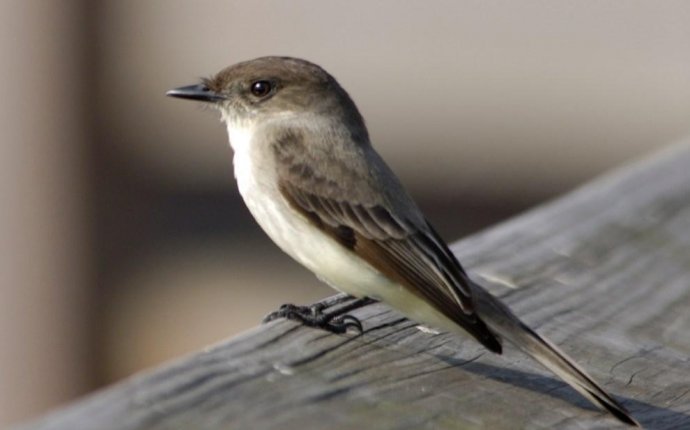
Eastern Phoebe Bird
The eastern phoebe is a rather dull phoebe found in the east and across central Canada. It frequently nests under eaves, bridges, or other overhangs on human-made structures. The eastern phoebe is most easily separated from other dull flycatchers by its characteristic habit of dipping its tail in a circular motion. Monotypic. Length 4.5".
The eastern is brownish gray above; darkest on head, wings, and tail. Its underparts are mostly white, with pale olive wash on sides and breast. Fresh fall adult easterns are washed with yellow, especially on the belly. Molt occurs on the breeding grounds. Juvenile: plumage is briefly held and similar to the adult’s but browner, with 2 cinnamon wing bars and cinnamon tips to the feathers on the upperparts.
Pewees are darker and they have longer wings, but they are most easily separated from phoebes by the phoebes’ distinctive tail wagging. Empidonax flycatchers have eye rings and wing bars, which are absent in the eastern phoebe. An empidonax flycatcher flicks its tail upward; only the gray flycatcher dips its tail downward.
Call: typical call is a sharp tsip, similar to the black phoebe’s. Song: distinctive, rough whistled song consists of 2 phrases: schree-dip followed by a falling schree-brrr; sometimes strung together one after the other.
Common. Breeding: woodlands, farmlands, parks and suburbs; often near water. Migration: breeders return to the Midwest mid-March–late April and depart late September–early October. Rare in fall and winter to California. Vagrant: casual west of the Rocky Mountains and northwestern Great Plains. Accidental to southern Yukon and northern Alaska; sight record for England.
—From the National Geographic book Complete Birds of North America, 2006









